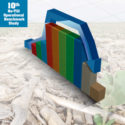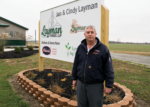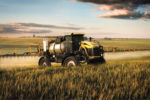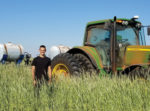Advertise Follow Us
No-Till Farmer

View Archived Issues
April 2018: Conservation Tillage Guide
Volume: 47
Edition: 4
Get full access NOW to the most comprehensive, powerful and easy-to-use online resource for no-tillage practices. Just one good idea will pay for your subscription hundreds of times over.
-
Table of Contents
Table of Contents
Digital Subscribers enjoy full access to No-Till Farmer's premium content. A paid subscription is required in order to read these stories.Are you a Premium or Digital subscriber? You enjoy:
- Unlimited access to all digital content here
- Freedom to view No-Till Farmer on all your devices
- Gleaning years of knowledge from the world's largest online library dedicated to no-till practices
Are you a Print only subscriber? Easily upgrade your subscription today! For only $10 more on a one year option, you gain the benefits of both the print edition delivered to your door and unlimited access to thousands of online pages of no-till content.
Carbonomics: Opening a Carbon Currency Exchange Within a No-Till Soil Ecosystem
Crop diversity and biological activity in a cover-cropped farming system ensures healthy interactions between plants, roots and soil organisms, says Keith Berns.Read MoreNo-Till Operational Benchmark Study20 No-Till Trends from the Past Decade
Cover cropping, yields, seed corn populations and precision tools all on the rise, while Roundup Ready soybeans, soybean seeding rates and applied nitrogen on the decline, according to No-Till Farmer readers.Read MoreNo-Till Operational Benchmark StudyNo-Tillers Keep Their Noses Above Water
From highs to lows, No-Till Farmer readers adjusted to a weakening U.S. ag economy during the last decade by cutting expenses to maintain slim profits.Read MoreNo-Till Operational Benchmark StudyNo-Tillers Walk a Fine Line on Earnings
Boosted by record corn yields, no-tillers eked out slightly better profits in 2017 despite higher expenditures for land rent, crop protection, equipment.Read MoreNo-Till Operational Benchmark StudyNo-Tilled Corn Yields Hit Record Again
No-tillers smashed their 2016 corn yields by 10.5 bushels per acre, but soybeans had to settle for second-best vs. prior-year record levels.Read MoreNo-Till Operational Benchmark Study14 Facts About the Top No-Till Yielders
Whether corn or soybeans, these top-third no-till yielders used more inputs, spent more money to get higher yields in 2017, but with mixed bottom lines.Read MoreNo-Till Operational Benchmark StudyCover Crop Train Keeps Rolling On
Use hits all-time high at 83%, but more cereal rye seeded to trim costs.Read MoreNo-Till Operational Benchmark StudyFertilizer Expenses Creep Upward
After slashing their fertilizer bill nearly 27% in 2016, no-tillers battled to keep their spending on applied nutrients to a 4% increase last year.Read MoreWhat I've Learned from No-TillingCattle, Cover Crops, No-Till and Improved Soil Health Provide Returns
Fifth generation of Doans keeping North Dakota’s Black Leg Ranch abundant with diverse business plan of cattle, crops and agritourism.Read MoreBiofertilizers Helping No-Tillers Save Money, Fix Soils and Boost Yields
With a little time investment and a cheap source, soils and crops can benefit from biosolids, compost, biochar, sea plant extracts and other natural products.Read MoreNo-Till Pays Off, Dollar for Dollar
A long-term commitment to soil health and precision fertilizer use help Jan and Cindy Layman turn their no-till operation into a thriving enterprise.Read MoreSpray Nozzle ‘Sweet Spots’ Help Reduce Drift Potential
Despite mounting drift-control concerns, sprayer nozzle designs and pressures should be maximized for efficient weed and insect control.Read MoreRethinking ‘Conventional’ Wisdom Leads to Revelations, 100% No-Till
Parking the plow helped John Macauley cut five passes across the field, save on fuel and labor and maintain yields as he builds a more sustainable operation.Read MoreNo-Tiller Launches Right Into Cover Crops, Planting Green
No-tilling for only a few years, Josh Payne is already reaping the benefits of diverse cover crops, improved soil tilth and reduced commercial inputs.Read MoreNo-Till RoundtableWhat precision ag tool(s) has given you the best ROI?
-
Featured Articles
Featured Articles
What I've Learned from No-TillingCattle, Cover Crops, No-Till and Improved Soil Health Provide Returns
Fifth generation of Doans keeping North Dakota’s Black Leg Ranch abundant with diverse business plan of cattle, crops and agritourism.Read MoreNo-Till Operational Benchmark Study20 No-Till Trends from the Past Decade
Cover cropping, yields, seed corn populations and precision tools all on the rise, while Roundup Ready soybeans, soybean seeding rates and applied nitrogen on the decline, according to No-Till Farmer readers.Read More - Digital Edition
-
Online Extras
Online Extras















